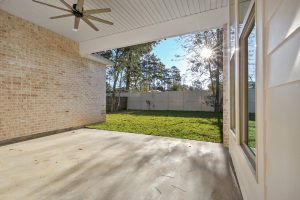Natural disasters can happen at any time and you want to be protected when they do occur. Natural disasters include earthquakes, floods, hurricanes, tornadoes and wildfires. You want to consider the benefits of purchasing a resilient home construction and location. Instead of using all decorative features, use resilient features that will increase safety, durability and peace of mind. Resilient features will also bring you financial benefits through insurance savings and increase market value. The location of your home can also play a big part in its resilience such as a home located in a wild-land urban area will be more prone to wildfires. A home on an elevated lot may be protected from flooding when their neighbor’s home right next door flooded due to the flat lot. The following tips and practices are good to follow when dealing with owning or renovating a home Here are steps to take on how to strengthen your home against a natural disaster by FLASH (Federal Alliances for Safe Homes) and the Resilience Action Fund. 

Start the Search
Find a real estate agent who is familiar with resilient homes and resilient neighborhoods. A Realtor can help you with your checklist. Always use an inspector when purchasing a home or one to inspect your renovations after they are complete.
Select a Resilient Community by Checking for Common Perils
A great resource to start with is inspect2protect.org. Visit this site to see if your current neighborhood uses the current model building codes. Not only will this site provide this information but also give you a disaster history in your community and a list of renovations, retrofits and upgrades that can make your home stronger and safer.
Select the Right Home for You by Checking Its Disaster Resilience Potential
You will want to evaluate the resilience potential of the home you are considering purchasing. Make sure to answer each of these questions, what month and year was the home built, was the home constructed following building code, has the home experienced damage from past disaster, why is the home currently for sale and how long has it been on the market, are any renovations or additions properly permitted, how old are the roof, electrical system, plumbing system, heating/air conditioning and major appliances, has the home had an existing homeowner file an insurance claim and does the home have a disclosure statement that reveals past or existing problems?
Create a Budget and Secure Financing for Resilience Options
When creating your budget, include resilience upgrades and maintenance. Examples would be adding hurricane shutters or replacing a wooden deck with non-combustible materials. Also when obtaining a mortgage, choose a lender that will allow you to borrow money for retrofitting and resilience upgrades.
Put in an Offer with Resilience Contingencies in Mind
Remember to always get a home inspection. You will want to research the area to see if it is prone to earthquakes, floods, hurricanes, tornadoes or wildfires. You will want to make sure then make sure to include any of these in contingencies and your offer contract.
Get a Home Inspection and Appraisal
During a typical home inspection, an inspector does not address the survival rate of a home during a natural disaster. Their main focus is on the roof and systems such as the HVAC, electrical and plumbing. It is a good idea to attend your home inspection.
Find the Right Insurance Coverage
Before you purchase the home, check with the insurance company you have chosen to get a ballpark annual costs. Double check to make sure you do not need to purchase a separate policy for wind, earthquake, and flood. Remember your home’s construction type and building codes can affect your policy’s cost and availability. Also ask if there are any credits or discounts for homes with resilient features.
Maintain Your Home
Annual household projects are a must when it comes to the resilience of your home. You check and maintain caulking and flashing around windows and doors once a year. This will protect from water intrusion, save energy and lower your electric bill. Another annual upkeep is to keep your gutters clear of leaves and debris and prune shrubs and trees away from your home’s exterior.
Plan and Save for Future Projects
Here are some examples of what you might want to plan in certain zones. If you are in a hurricane zone, you will want to add hurricane shutters. If you are in an earthquake zone, you will want to brace cripple walls and chimneys. Tornado prone areas could use a safe room and wildfire prone areas could use non-combustible materials.
These are just some basic ideas to help you avoid the heartache that comes with natural disasters. Remember to make sure to check your community’s natural disaster list. If you are in the market to purchase a home, choose a local real estate agent that can help you with the right choice.

